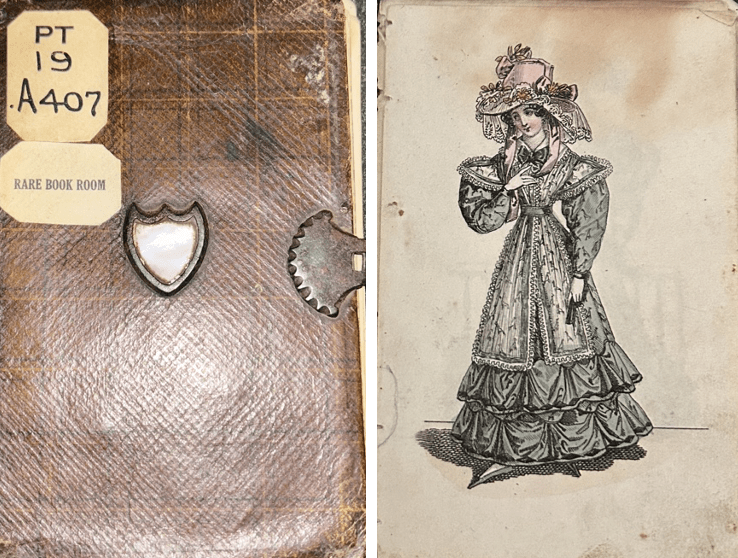by Sam Remondi

Calender auf das Jahr nach Jesu Christi unsers heilandes Geburt 1790: This amazing edition features a hand-painted, embossed leather cover with gilt edges, a leather slip case with a green paper sleeve within, a small ivory-topped pencil, sharpened by knife many years ago. Editions like this one showcase the craftsmanship that could be featured in certain Taschenbuch volumes, and just how prized these possessions must have been.
Table of Contents:
- Das Taschenbuch: What is it?
- Publishing in 18th Century “Germany”
- Women & the Taschenbuch
- The Professional Writer & Lesesucht
- Text & Materiality Part Ways
- Bibliography
Das Taschenbuch: What Is It?

The Taschenbücher Collection in the University’s Special Collections serves as an enduring testament to the changing world of German literary and material culture from the late 18th to mid-19th centuries.
The core of the Library’s holdings of this genre is the collection of Dutch literary scholar Ernst Ferdinand Kossmann, purchased in 1928. The collection is supplemented with almanacs from Linckes Leihbibliothek, a nineteenth-century popular lending library from Leipzig, purchased en bloc by the Library in 1930, along with a smaller number of others collected in the time since.
The collection features almost 1,700 volumes of Taschenbücher and their antecedent Musenalmanache. The Taschenbuch generally appeared later and is more prosaic, featuring novellas, essays, and stories, in addition to the poetry and calendar material so central to the earlier Musenalmanach. The line is blurry, however, with some volumes calling themselves Musenalmanache well into the 19th century. The content within them, though, was not confined to these more usual types: some editions feature genealogies of local royalty, biographies of significant writers, postal schedules, and even cooking and dance instruction.
The Taschenbuch – or, in English, the pocketbook – tends to be small, some only a couple inches in length. They were made for portable reading. Some editions were even fashioned to be wallets themselves, featuring pockets, among other unique features, within their bindings. These bindings ranged wildly, some sported only simple paper wrappers, while others were lavished with beautifully marbled papers and ornate clasps. Many of the books are fashionable objects, most containing engravings of some kind, often fashion plates, many of these wonderfully hand colored.

Almanach der Liebe und Freundschaft 1829: Though fashion plate engravings of this kind can be found in many of the volumes, this particular edition, with its careful hand-coloring, along with the now-broken clasp and mother of pearl seal on its cover, showcases the lovely visual objects that abounded in volumes that contained, alongside them, serious poetry and fiction.
